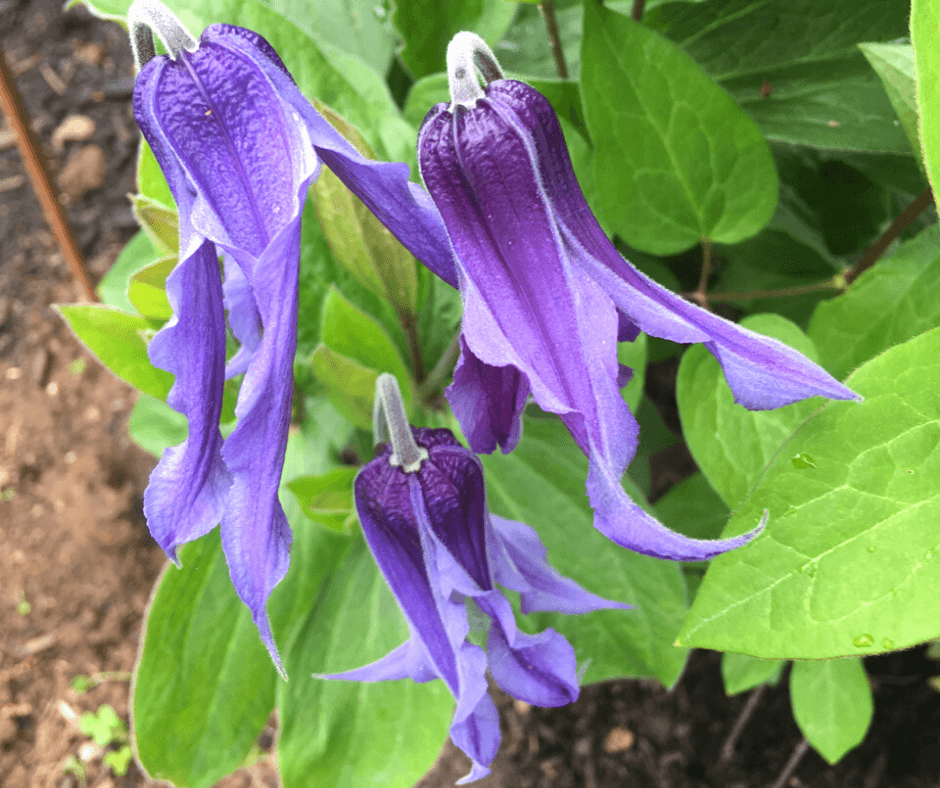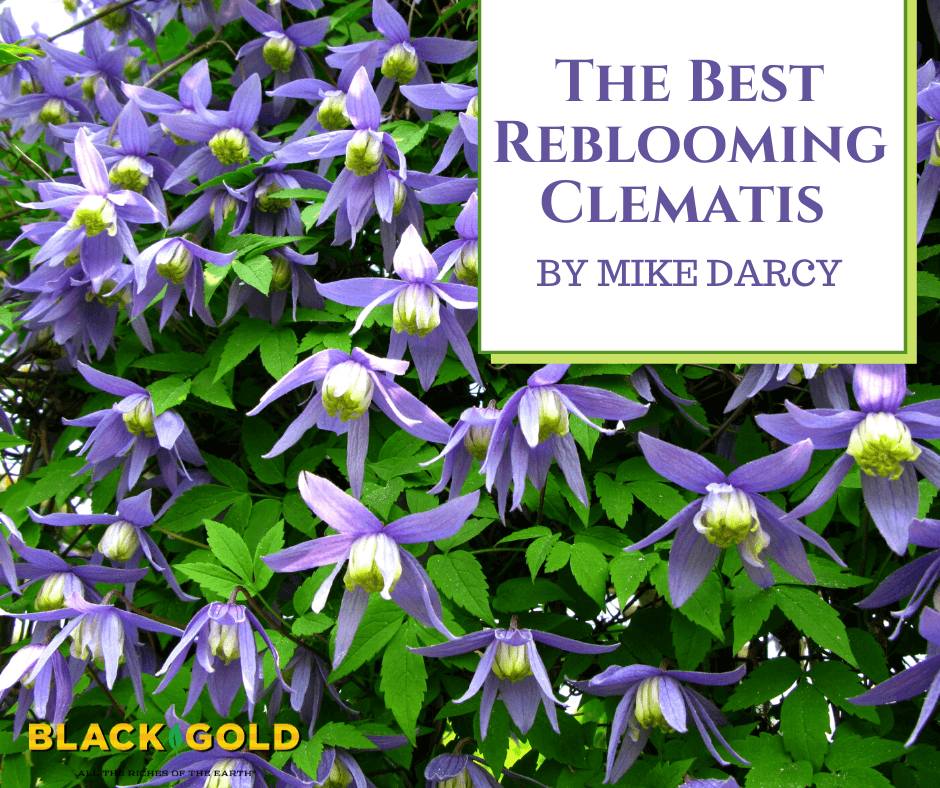
When visiting older established gardens, if there is a border garden, it will probably contain at least one of these three plants: peony, bearded iris, and clematis. These are often considered old-fashioned plants because they have been regularly planted in gardens for so many years. All three of these plants are generally considered reliable spring bloomers and once blooming. The bloom period can be over several weeks, and there are usually early and late-season varieties, but their flowering time is usually spring and early summer with additional flowers not expected until the next spring. There are, however, exceptions.
Over the past several years, there has been a resurgence of interest to select those that will rebloom. This is especially true with clematis, and with a little effort, a gardener can have plants that will rebloom once and sometimes even twice. I recently discussed reblooming clematis with Linda Beutler, curator of the Rogerson Clematis Collection in Lake Oswego, Oregon, and here are some of her thoughts.
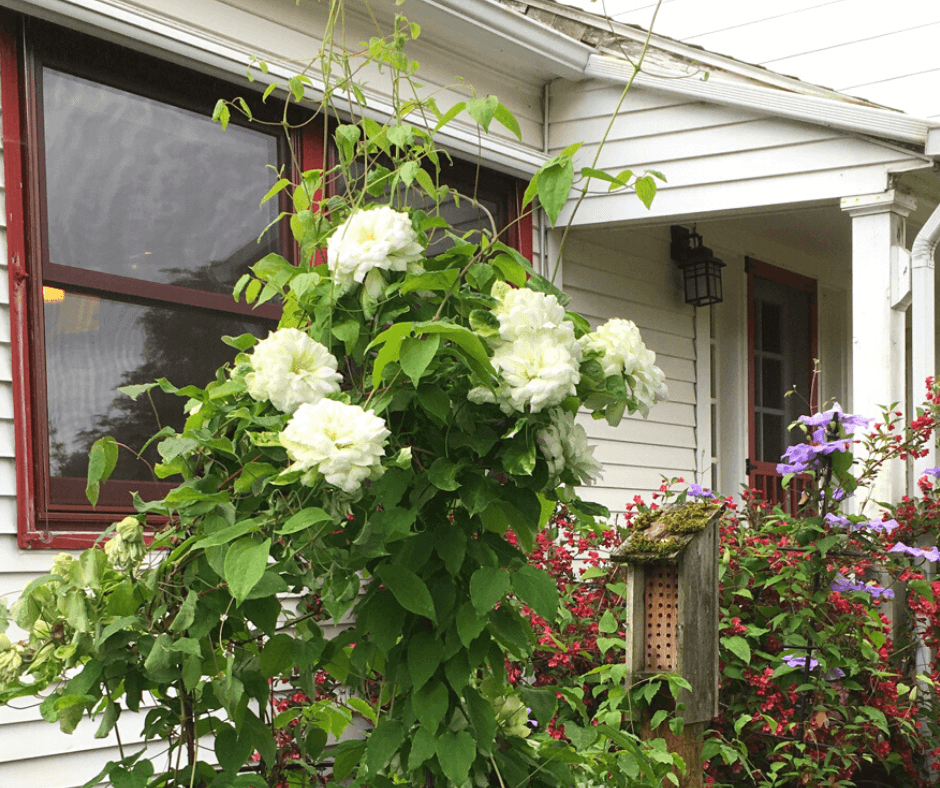
Reblooming Clematis Care
Most clematis grow best in the full to partial sun and like to have their roots shaded and their tops in the sun. After a clematis has flowered, deadhead it, (remove old flowers) and do some light pruning if necessary. Deadheading prevents the plant from setting seed and light pruning removes any dead stems and opens the plant up to more sunlight. Fertilize the plant at this time. Linda said a rose & flower fertilizer is generally good. At the Rogerson Clematis Collection, they use a fertilizer with an NPK, (Nitrogen- Phosphorus-Potassium nutrient numbers on the bag or box) ratio with numbers under 10. Currently, they use a 5-7-2. Often, 30-45 days after fertilization, the plant will re-bloom. For a full list of care tips, visit the Rogerson Clematis Collection page on clematis care (click here).
Five Recommended Reblooming Clematis
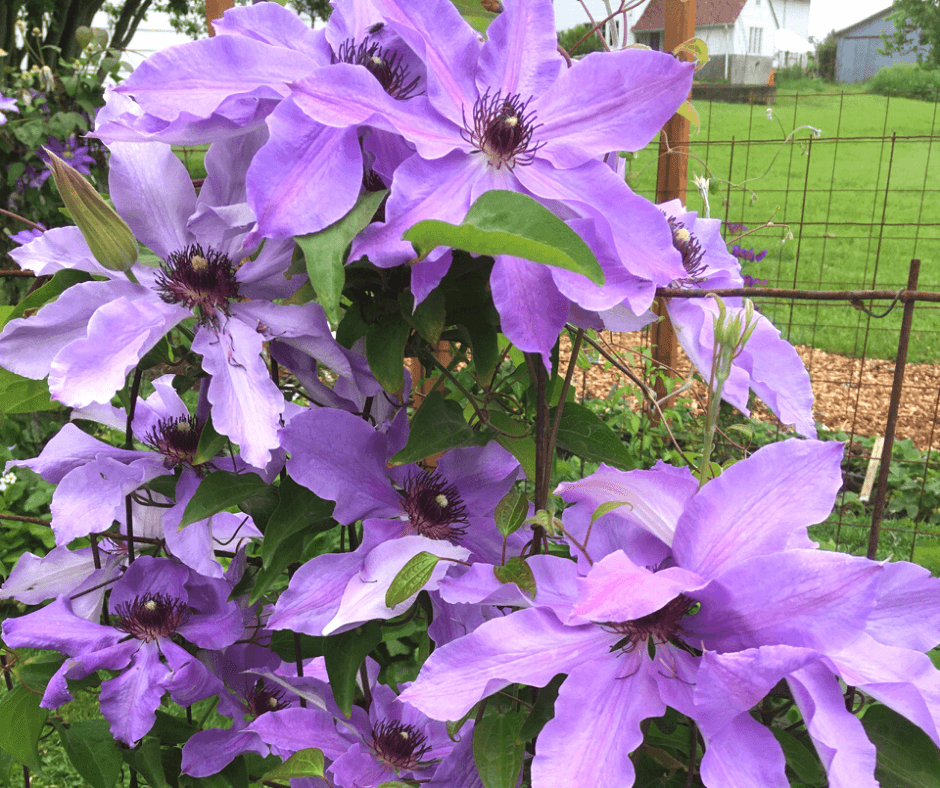
Naturally, some plants will consistently rebloom easier, and for that consistent rebloom the following are five clematis varieties that Linda recommends.
- Clematis alpina ‘Pamela Jackman’ (Zones 3-9) flowers first in April and reblooms well, often in late summer. It requires trellising and can also be grown well in a container. With this clematis, you can have April in August.
- Clematis ‘Elegant Rhythm’ (Zones 5-9) is a handsome herbaceous perennial clematis named and introduced by Joy Creek Nursery. If you do not allow it to set seed, it will rebloom through late spring and summer, just like annual Scabiosa or perennial Astrantia.
- Clematis ‘Duchess of Edinburgh’ (Zones 4-9) is a double that can bloom as many as three times in a long growing season. Deadhead the spent blooms and fertilize with most any fertilizer for roses. The fully-double flowering clematis will often produce flowers that are less doubled when they rebloom.
- Clematis ‘Blue Ravine’ (Zones 4-9) is an excellent large-flowered variety and has the added advantage of flowering well—if paler—in partial shade. The photo above was taken in September 2020 and looks as though it were in spring.
- Clematis ‘Niobe’ (Zones 4-9) is a deep-red variety (pictured below reblooming in the autumn). Look closely at the image and you can see this clematis is growing through and is supported by another plant. This particular support plant is Osmanthus heterophyllus ‘Goshiki’.
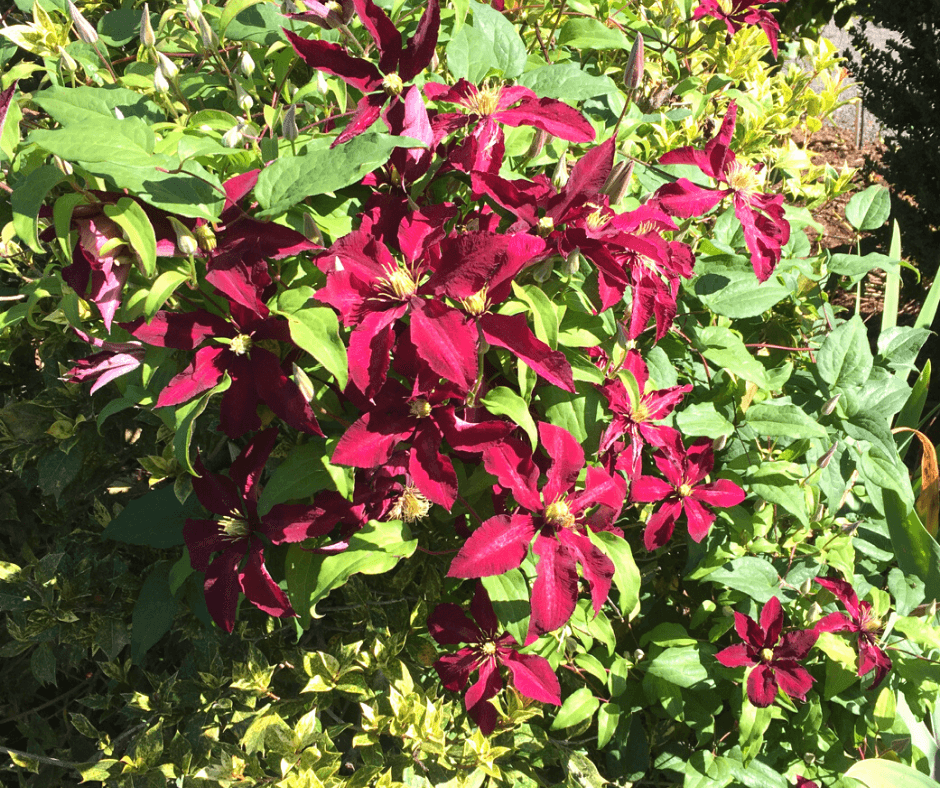
Clematis are often grown in this way using another plant for support. Often some of the old garden roses are used because they not only offer a good support system, but the clematis will flower again when the once-blooming roses are finished.
If you are visiting the Pacific Northwest, and have any interest in clematis, be sure to visit the Rogerson Clematis Garden, which is part of the Lake Oswego, Oregon, Parks & Recreation system. With over 900 taxa represented, it is the most comprehensive collection of clematis within a public garden in North America. Admission is free.
